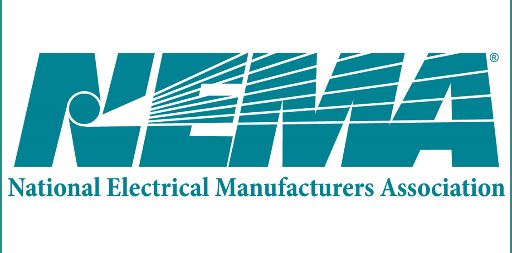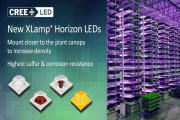The National Electrical Manufacturers Association (NEMA) has formally requested that the Secretary of Energy complete a rulemaking for general service lamps (light bulbs) that Congress required in the Energy Independence and Security Act of 2007 (EISA-2007).
(Image: NEMA)
The Department of Energy (DOE) began the rulemaking in December 2013 and published two rules on January 19, 2017, addressing only one of the issues that Congress required for the rulemaking. These rules did not address the key issue on which Congress required DOE to act: whether or not standards for general service incandescent lamps should be amended to be more stringent than the standards for those lamps that Congress enacted in EISA-2007. Nor did the rules address robust standards for light-emitting diode (LED) lamps that were originally proposed by DOE in 2016.
NEMA has also called upon DOE to establish a robust, economically justified national efficiency standard for general service LED lamps and to consider standards for certain other LED lamps.
“The statutory text is clear that Congress’ primary interest for this rulemaking was to determine whether general service incandescent lamps and other incandescent lamps that were exempt from regulation could be made more efficient and subject to higher standards,” explained NEMA General Counsel Clark Silcox.
“The January 19th rules avoided making that decision, but Congress required a decision on that question to be made. NEMA believes the Department of Energy flipped Congress’ intent on its head and mistakenly concluded that its job was to eliminate the energy-efficient halogen incandescent light bulb rather than determine whether a higher efficiency standard for those bulbs could be economically justified and technologically feasible. NEMA’s view is that the marketplace is doing an excellent job of transitioning to more efficient lighting solutions.”
In a letter to Energy Secretary Rick Perry dated March 3, 2017, NEMA informed the secretary that the lighting market is transitioning to more efficient lighting:
Consumers are buying more efficient light bulbs at unprecedented rates because they see the value in these lamps. NEMA and its members strongly support the market’s transition and Congress’ interest in seeing that happen; however it would be extremely unfortunate if that orderly transition is disrupted—impacting American consumers and workers who buy and make these lamps—by the department’s failure to follow the statutory text and requirements for this rulemaking.
NEMA’s interest is in promoting greater adoption of energy efficient lighting, ensuring consumer choice among energy efficient lighting options, preserving jobs, and ensuring that the market satisfies consumer demand for quality lighting products.
If DOE completes the rulemaking in the manner required by Congress, it will decide either that more stringent standards for the general service incandescent lamp can be economically justified and are technologically feasible or that Congress’ EISA-2007 standards for general service incandescent lamps will be left intact. The secretary can also consider whether to amend standards for the compact fluorescent lamp and whether to enact national standards for general service LED lamps. NEMA made constructive proposals for those lamps in 2016 as part of the rulemaking and has asked the secretary to consider those proposals.
“NEMA’s proposal for a robust national standard for LED lamps would raise the bar nationwide for general service LED lamps and is a far more sensible and energy-efficient approach than doing nothing nationwide,” said Silcox.
“NEMA is aware of media reports that some hold the view that a 45 lumen-per-watt standard for all of these types of lamps is going into effect in January 2020,” added Silcox. “But that remains to be determined, and it is premature to say either yes or no until DOE follows the rules laid out by Congress in the 2007 law and addresses all the issues that Congress directed DOE to address. The NEMA proposal for uniform national LED standards is considerably higher than a 45 lumen-per-watt standard that some states are promoting.”
In a separate but related matter, NEMA has asked the federal appeals court in Richmond, Virginia, to review the two rules that DOE published on January 19. “The two rules relate to whether certain specialty lamps are general service lamps and would be subject to the applicable standards,” explained Silcox.
“This is a matter of statutory construction, and NEMA believes that DOE impermissibly rewrote the statute in making its decision. Contrary to certain reports, the January 19 rules issued by DOE explicitly did not establish energy efficiency requirements; the rules only address the definition of what constitutes general service lamps and discontinuing exemptions from standards for certain lamps.”





 CN
TW
EN
CN
TW
EN





